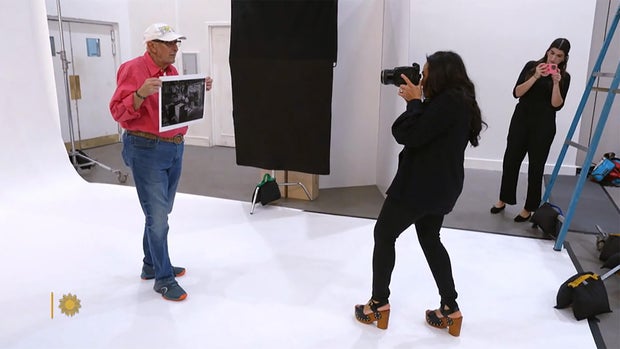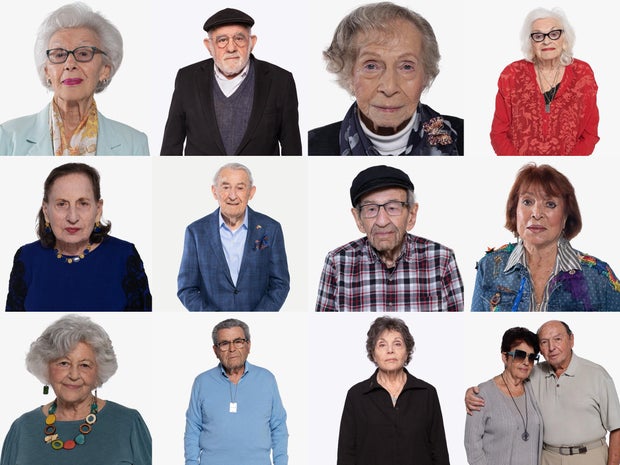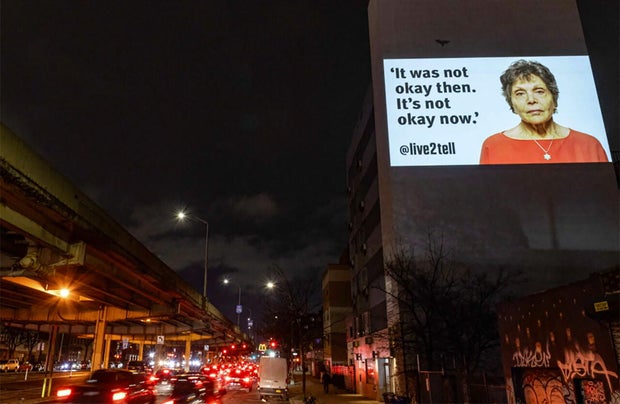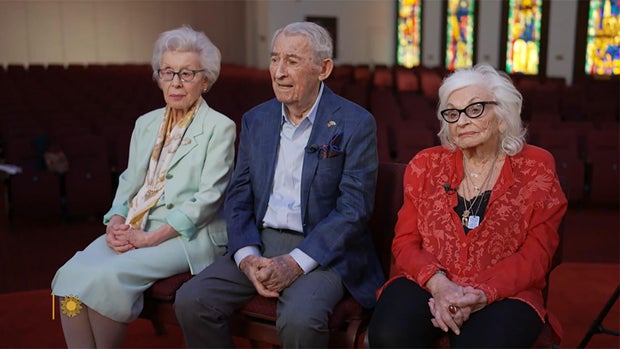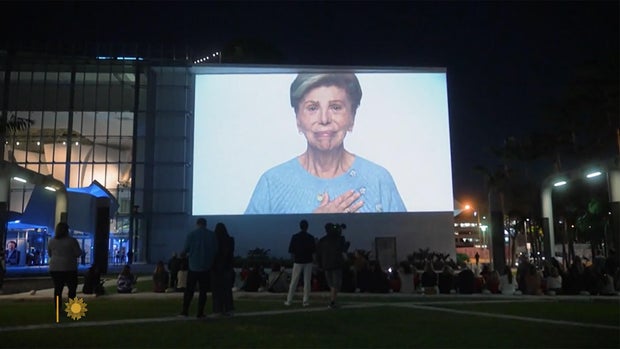It was a photo shoot like few others: those posing for the camera on this day in Miami aren’t fashion models, at least by trade. But they are models in their own way – models of courage, fortitude and grace, all formed in the crucible of the Holocaust.
“It is something that we carry,” said 87-year-old Judy Rodan. “It is something that cannot be washed off. No pills, no treatments, no psychology or psychiatry. I think I’ve done it all.”
CBS News
Rodan was hidden at a Catholic convent in Budapest until the end of the war. “All of my immediate family were eliminated at Auschwitz,” she said.
Eighty-eight-year-old Miriam Klein Kassendorf spent the war on the run from her home in what was then Czechoslovakia. “My father was grabbed by his elbows, and he was dragged out of our home on a Shabbat evening,” she said.
And 95-year-old David Schecter survived not one, but two extermination camps. He talks about it now, he said, because, “It felt that our children need to know.”
There is indeed a need to know, but we’re losing 8%-10% of our eyewitnesses every year. Of the 200,000 or so left, it’s estimated half of all Holocaust survivors will be gone in the next 5-7 years.
“This one woman said, ‘What’s gonna happen when I’m not here to tell my story?'” said photographer Gillian Laub. “‘Who’s gonna tell my story, and, like, say, This happened to me. Please believe me?‘”
Which is why Laub has been taking photos of as many Holocaust survivors as she can – more than 300 portraits so far, and she’s far from done. Of her subjects she said, “There’s pride, there’s strength and resilience, and there’s also sadness. Some people get emotional. Some people feel like, I am here. I am standing here proud and strong.“
Gillian Laub
We witnessed a moment when Kassendorf and another survivor, 89-year-old Stella Sonnenschein met for the first time … fellow travelers on a road neither of them wanted to be on.
“It’s our mission, it’s our mission; that’s why we survived,” said Kassendorf. “My father was a rabbi, and he told me that when I grow up, I should tell the world.”
“So, we have a job to do,” said Sonnenschein. “We have to live a very long time!”
In January 2024, some of Laub’s portraits became larger-than-life, when she projected them all over New York City (including on the Brooklyn Bridge) in honor of International Holocaust Remembrance Day. Laub didn’t ask the city for permission; she just did it, under the cover of darkness – a respectful, yet bold project she called Live2Tell.
“It was really, like, a caper, a renegade guerrilla art project,” said Laub.
One survivor, Pearl Field, said, “I’m really impressed one woman went through all of this to keep the Holocaust alive.”
Live2Tell
Laub said she had no idea what would happen. What did happen was more survivors started to come forward. What drove many of them to Laub’s camera, she says, were the events of October 7th, 2023.
Kassendorf said, “I thought, My God, they’re doing it again. They’re killing the Jews!“
“I was reliving my goddamn past,” said Schecter, “and I couldn’t shake it for several weeks.”
Rodan said, “When I see all this disaster and insanity around us, it’s 6, 8 thousand miles away, but it’s touching. It’s un-nerving.”
CBS News
Israel’s response, aimed at eliminating Hamas, has levelled Gaza, displacing nearly 2 million people, which sparked protests in the United States.
According to Laub, “They never saw or experienced the antisemitism that’s happening right now in their lives in America.”
It comes at a time when awareness about the Holocaust itself is already dimming. “About a third of all Americans say that they’ve seen Holocaust denial and distortion on social media,” said Greg Schneider. He is the executive vice president of the Claims Conference, an organization still negotiating with Germany and Austria for reparations to Jewish survivors. “As survivors are unfortunately leaving us in the greatest numbers, they’re mostly concerned about their legacy,” he said.
Last month, the Claims Conference released a survey on Holocaust awareness in seven countries across Europe, and the United States. “We were shocked by some of the results,” said Schneider.
For example, a large swath of those questioned thought the number of those Jews killed in the Holocaust was 2 million or fewer, not the 6 million who were actually murdered.
And nearly half of Americans surveyed couldn’t name a single German concentration camp or ghetto. “So, they couldn’t mention Auschwitz as an example,” Schneider said. “Half of Americans. So, imagine what will be 20 years from now or 30 years from now, when we don’t have Holocaust survivors who can go into schools and tell their stories.”
Even Laub herself says she’s left the past in the past far more often than she should. “When my grandfather used to talk about being beat up every day on his way to school for being a Jew, it didn’t really sink in to me what that must have felt like,” she said. “And I feel so guilty now.”
“You feel guilty ’cause you didn’t ask enough questions?” I asked.
“I didn’t. I didn’t. I was too young.”
Last month, Laub took her most recent Live2Tell portraits to Miami Beach, where Schecter, Rodan and Kassendorf saw themselves as the towering figures they really are … all of them beaming through the night on the 80th anniversary of the liberation of Auschwitz. As Laub said, “I was looking and seeking wisdom. I found that light from all of the survivors who became part of this work.”
CBS News
The children of the Holocaust – they are all we have left, those who never had the luxury of a childhood. Gillian Laub has given hundreds of them perhaps one last chance to bear firsthand witness to a brutality the world should never see again.
Speaking at the Miami event, Miriam Klein Kassendorf said, “Who knew that this would be our revenge to the hate, and to Hitler, and to antisemitism and the Nazis? As we say in Yiddish, Mir zenen do… We are here.”
For more info:
Story produced by Amiel Weisfogel. Editor: Carol Ross.
See also:

